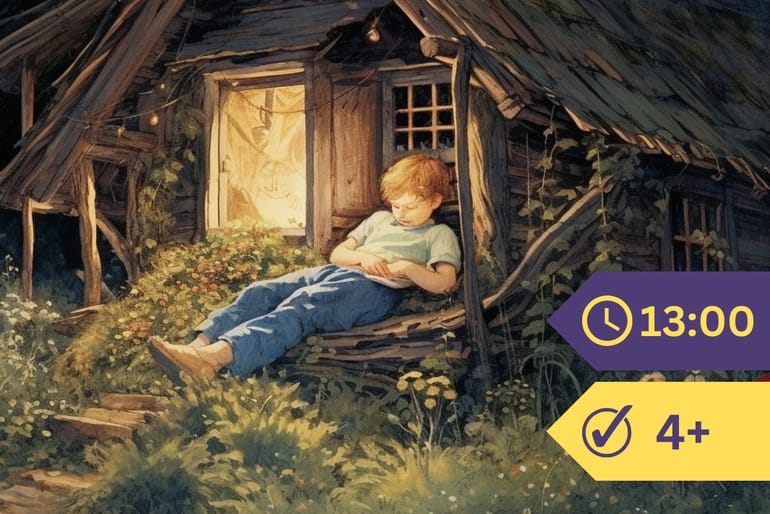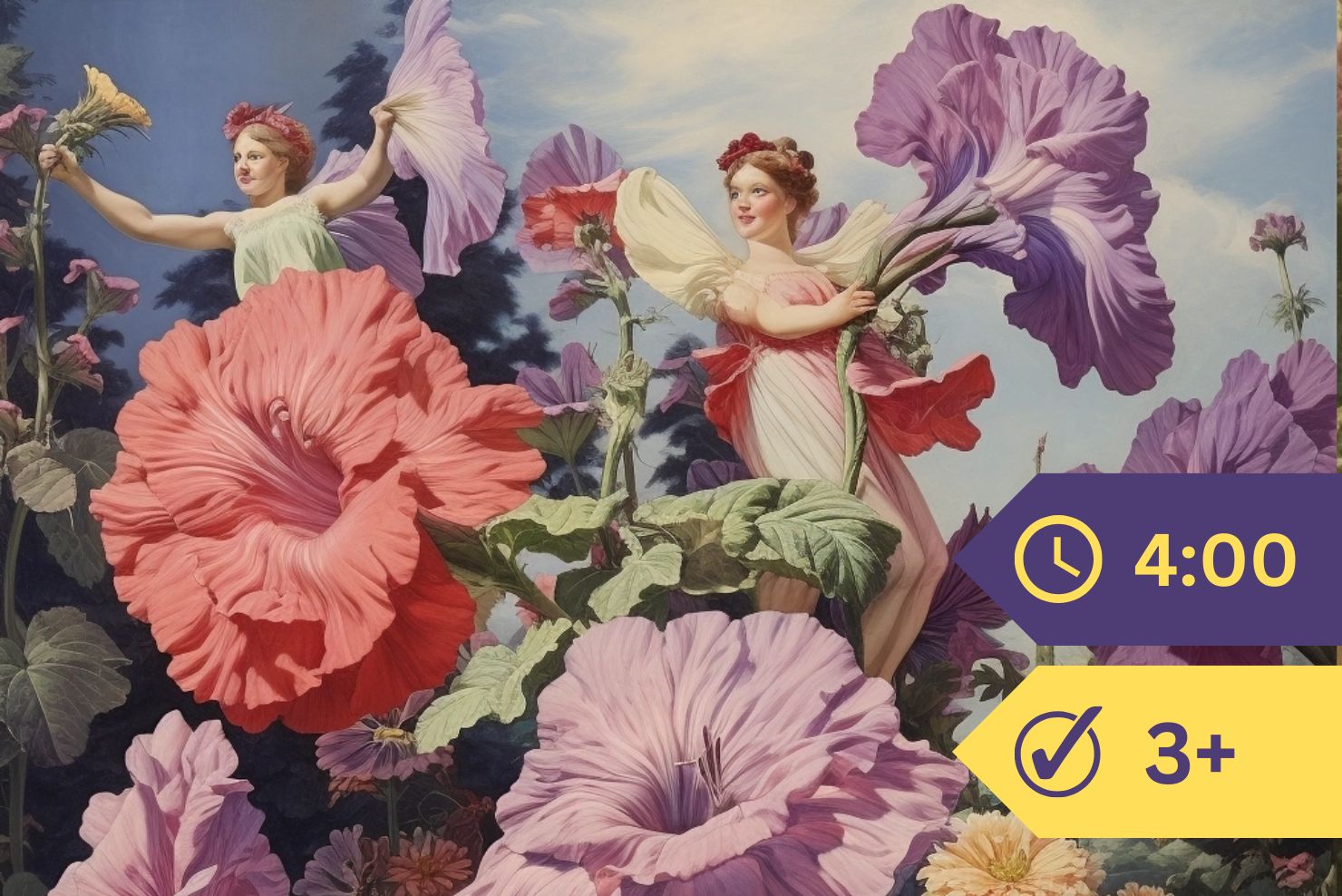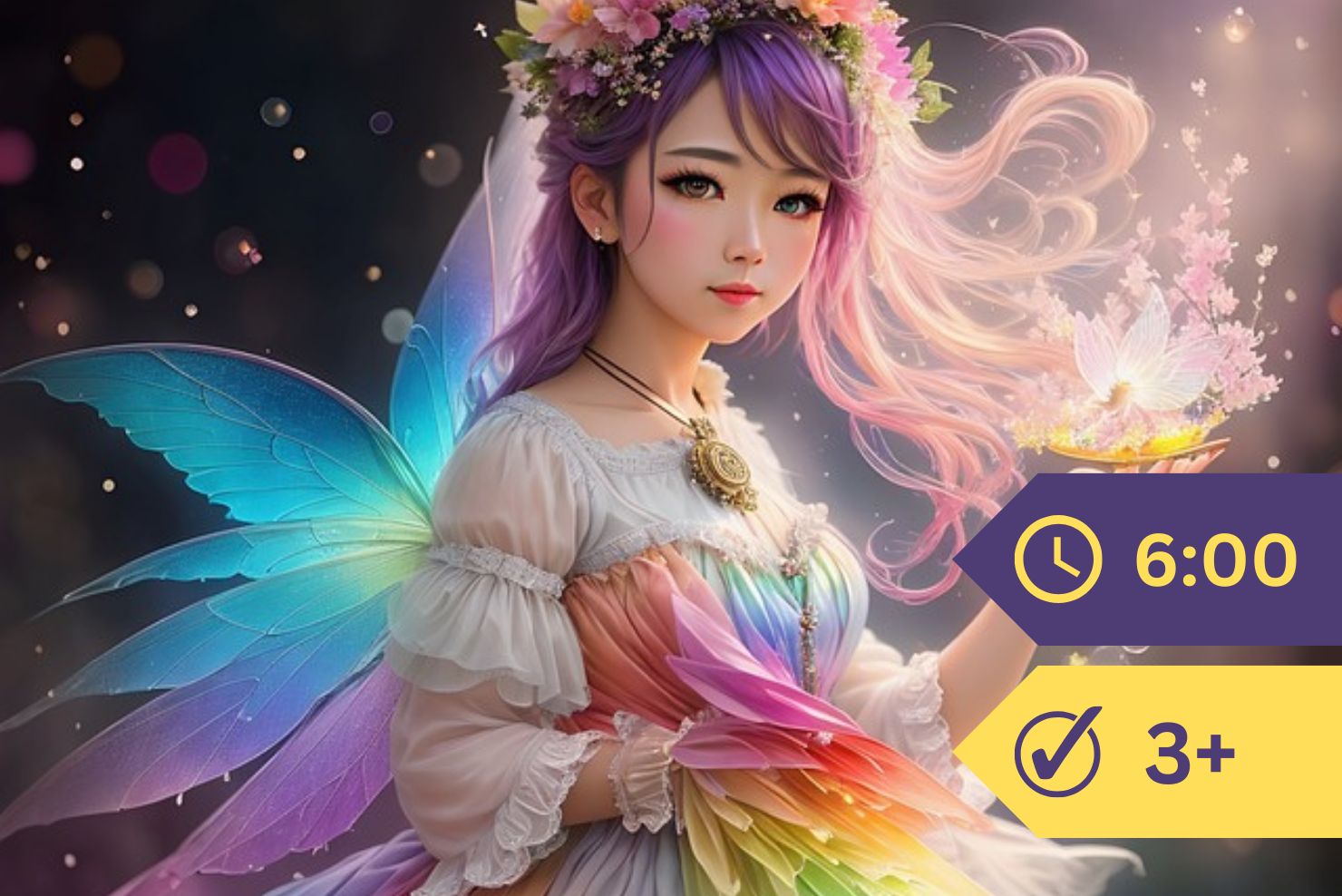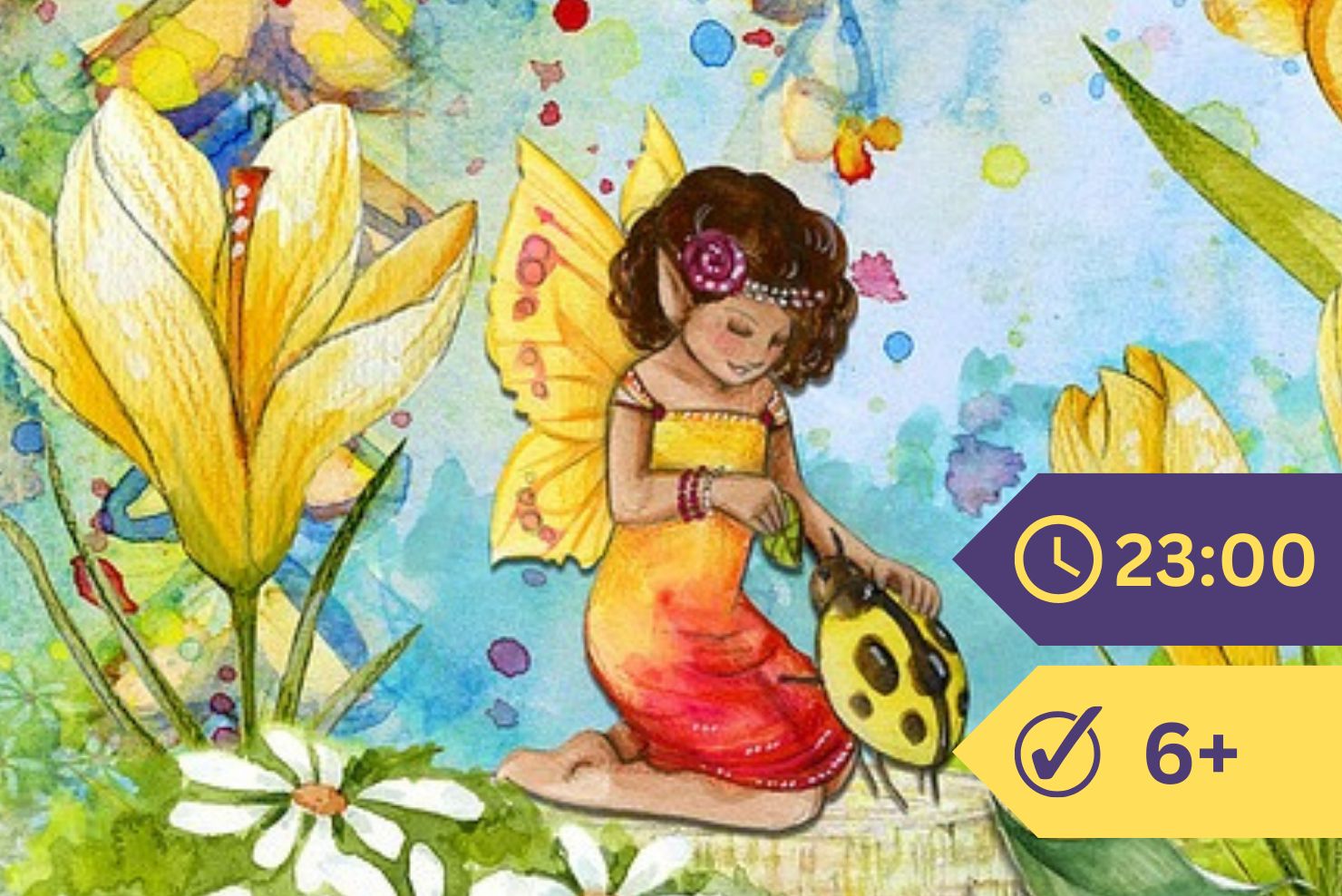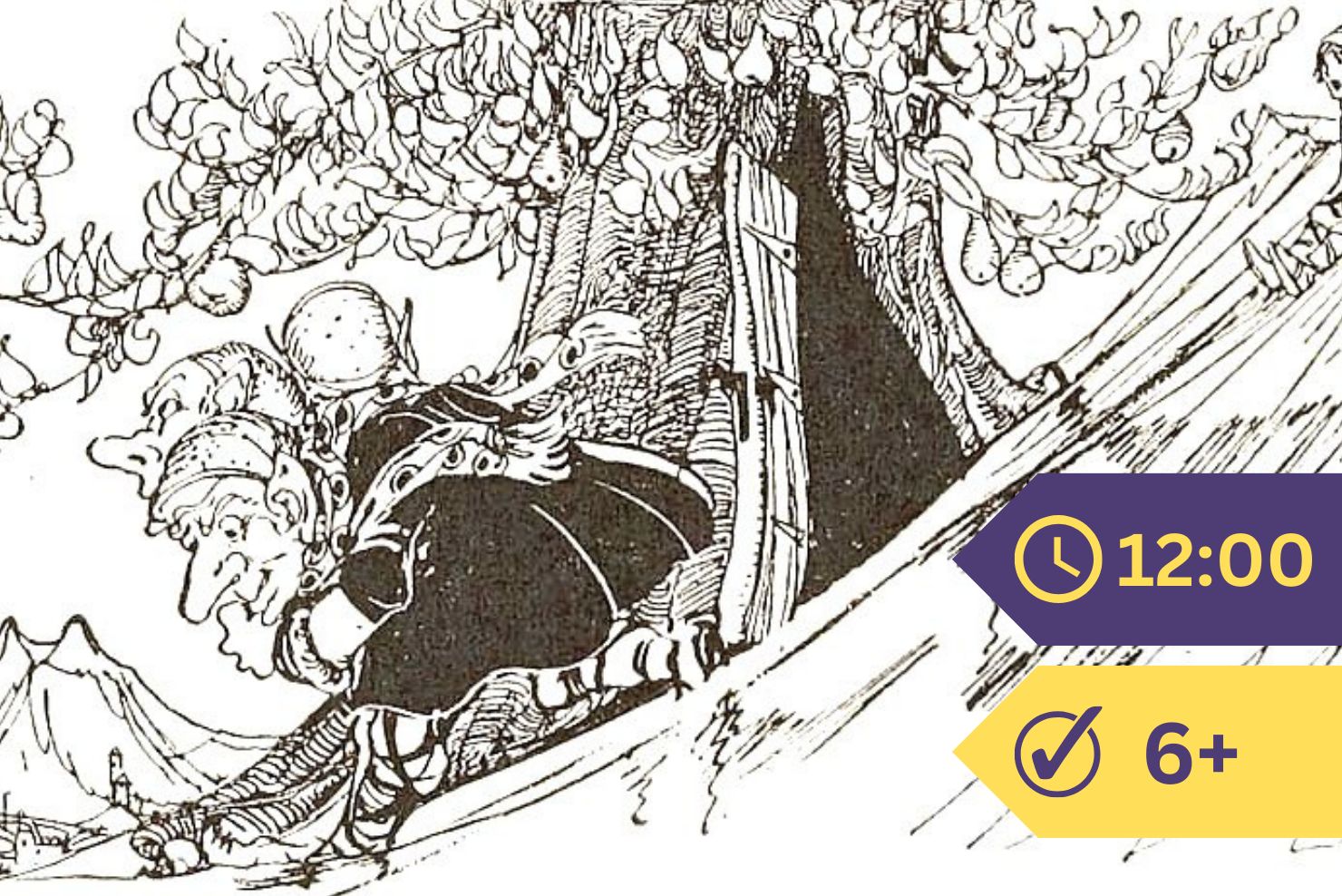Once upon a time, there was a fairy who married a mortal, though her husband did not know she was a fairy. It happened that one night, a fairy strayed from her Queen and her sister fairies and flew to the top of a mountain, where a poor peasant youth lived, who was exceptionally handsome.
The fairy found the peasant asleep outside his door in the moonlight. Upon seeing his handsome face, she fell in love with him. However, she knew that she could never be his wife as long as she remained a fairy. Determined to be with her beloved, she flew to an old witch, whom she had helped in the past, and expressed her desire to become mortal. She explained that she had fallen in love with a mortal and would never be happy again without his love.
The old witch cautioned her, saying, “You know the consequences if you are discovered by your Queen, even as a mortal.”
“Yes, I know,” replied the fairy, “but I am willing to risk it all to be the wife of my beloved. Please, Mother Witch, change me quickly so that I may return to him before he awakens.”
Granting her request, the old witch transformed the fairy into a beautiful girl and gave her a pair of enchanted shoes to wear while climbing the mountain. The witch instructed her, “Throw these shoes over the mountainside as soon as you reach the top. They are enchanted, and if the fairy Queen or any of your sisters were to see them, they would know at once that you are the fairy who ran away. They will continue to search for you.”
The fairy-girl promised to follow the witch’s instructions and slipped on the shoes. She glided up the mountain and stood beside the sleeping peasant, completely forgetting about the shoes in her eagerness to awaken her lover. When the peasant opened his eyes and beheld the beautiful girl, he fell in love with her and asked her to be his wife.
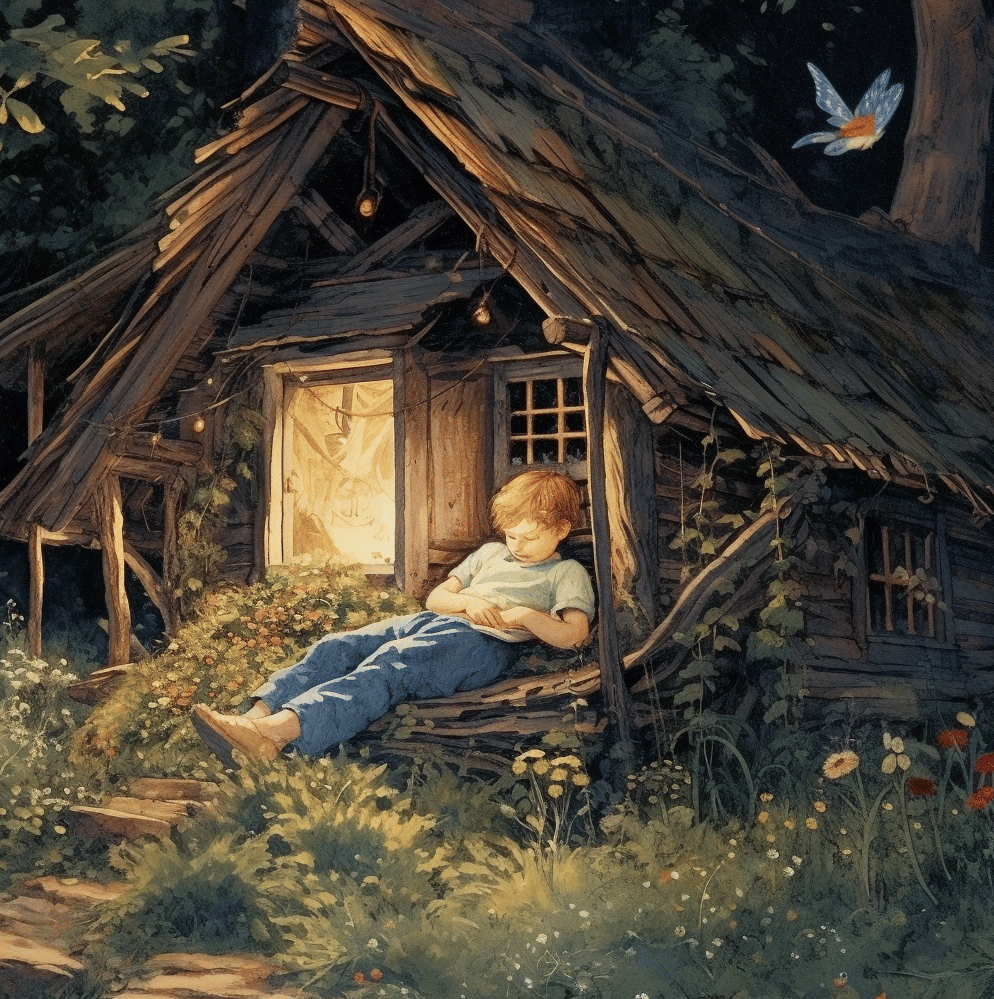
The following night, the fairy Queen called her fairies and realized that one of them was missing. “Search for her,” commanded the Queen. “Search high and low, and if she has run away, she shall face the consequences.” The little fairies flew away, scouring under stones, leaves, and even the river, but they could not find their sister fairy. They presumed her to be lost.
However, the Queen was not ready to give up. “She must be found,” she declared to the fairies. “No fairy can be lost forever. Either she has run away and become a mortal, or she can be found. Tonight, let us search the tops of all the mountains, and I will accompany you.”
The fairy-girl was content and happy with her husband, who loved her deeply. Yet, she never revealed her origin to him, which occasionally saddened him.
As for the shoes the witch had instructed her to discard, the fairy-girl had hidden them under a bush, thinking that she might need them someday. It was there that the Fairy Queen discovered them and recognized their magical properties.
“She is on the mountain-top,” declared the Queen. “We must find her. I have a strong feeling that she has become a mortal. She shall face severe punishment for her actions.”
Thus, the fairies and the Queen flew around the mountain until they reached the cottage where the peasant and the fairy-girl resided. They peered through the window. Initially, the Queen was uncertain if the fairy-girl was the runaway fairy. However, she knew that if she were the lost fairy, she would be able to see the Queen when she tapped on the window. To ensure the peasant could not see her, the Queen made herself invisible to mortal eyes. Nevertheless, she knew that the girl, if she had ever been a fairy, would always be able to see her Queen.
“Tappity-tap, tappity-tap,” went the Queen’s wand on the window. Instantly, the fairy-girl looked up and spotted her Queen. She turned pale, and her husband embraced her, concerned for her well-being. Yet, she assured him that it was merely a result of pricking her finger with a needle and that she was not unwell.
That night, while her husband slept, the fairy-girl quietly left the house, knowing that the Queen had come for her. There was only one chance for escape—to retrieve the shoes and reach the old witch before the Queen could touch her with her wand.
She closed the door gently and set off towards the bush where she had hidden the magic shoes. As she extended her hand to retrieve them, the fairies emerged from the shoes. From under one of them, the Queen, who had been hiding, reached out with her wand and touched the girl fairy on the head.
The moment the fairy Queen touched the fairy-girl on her head, she transformed into a white rabbit and darted into the woods. The Queen explained, “You see what will happen to you, my fairies, if you run away or become mortal. You will be changed into a white rabbit and can never regain your fairy form. You will remain a white rabbit, as there is only one unlikely way for you to become mortal again.”
The little fairies promised they would never run away from the Queen as the fairy-girl had done. With sorrowful eyes, they glanced towards the spot where the little white rabbit had vanished into the woods.
When the peasant awoke and discovered his wife’s absence, he rushed out of bed, searching every corner of the house. He looked under the bed, thinking she may have played a trick on him and hidden there. Then he checked the closet and the attic, but she was nowhere to be found. He searched the mountain for her, but she had vanished without a trace. Her disappearance was as mysterious as her arrival, and the peasant began to wonder if she might have been a fairy after all.
One day, as he sat weeping outside his cottage door, mourning his lost wife, a little white rabbit approached and rubbed its head against his leg. The peasant reached down, picked it up, and cradled it in his lap, gently stroking its head. “Poor creature, have you lost your mate?” he sympathized.
To his surprise, when he set the rabbit down, it did not flee into the woods. Instead, it stayed close by his side. When he entered the cottage, the rabbit hopped up to the doorstep, insisting on joining him. The peasant took pity on the rabbit and allowed it inside.
He fed it lettuce and other greenery, making a bed for it near his own. Somehow, the presence of the little white rabbit comforted him whenever he thought of his lost wife.
Often, while walking on the mountain, he came across a pair of shoes beneath a bush. The shoes were so small that he wondered if they possessed magical properties. He brought them into his cottage and placed them on the floor. Upon seeing the shoes, the white rabbit ran over and sat beside them, nudging them with its nose.
The rabbit remained so close to the shoes that the peasant picked it up and placed it inside one of them. As soon as the rabbit touched the shoe’s interior, the shoe bolted out the door, with the peasant unable to keep up.
Undeterred, he continued running and witnessed the shoe swiftly descend the mountain and enter the woods at its base. The peasant kept following and saw the shoe come to a halt at the entrance of the old witch’s cave.
Observing the shoe containing the white rabbit, the witch remarked, “So the Queen found you, didn’t she? I told you to throw the shoes down the mountainside. Why didn’t you follow my instructions? There is only one way to save yourself now: Some mortal must ask you to marry him. However, that is highly unlikely since mortals are unwilling to wed little white rabbits.”
The little rabbit hung its head, unable to speak, yet it comprehended the witch’s words.
The peasant, hearing every word exchanged between the witch and the rabbit, began to understand the situation. He hurried to the witch and declared, “Mother Witch, I will marry the little white rabbit. Please bless our union.”
The witch waved her cane over him as he picked up the little white rabbit from the shoe. In his arms, the peasant found his wife once again, permanently transformed into a mortal. The fairy spell had been lifted.
“I offer you my blessing,” proclaimed the witch. “As a gift, when you return home, the first thing you should do is look inside the other magic shoe. Then throw the shoe down the mountainside, or the same fate that befell you will befall what you find inside the shoe.”
The wife pledged to keep her promise this time, ensuring that as soon as she arrived home, the shoe would be discarded.
The peasant and his wife expressed their gratitude to the old witch and hurried back to their cottage. When they peered inside the magic shoe, they were astonished to find a precious little baby girl smiling up at them. The wife cradled the baby close to her heart and said to her husband, “Without delay, take the shoe and cast it far down the mountainside. Our baby must remain mortal, as she may not be as fortunate as I was in finding a mortal willing to marry a little white rabbit to reunite with his wife.”
The peasant wasted no time in disposing of the magic shoe. He ran back to the cave of the old witch and requested that she become the godmother of their child. Delighted, the witch waved her cane over the baby girl, bestowing a gift of eternal happiness and ensuring she would grow up into a beautiful and virtuous woman.
Whether the fairy Queen ever learned of the white rabbit’s fate remained unknown to the peasant and his wife. Even if she did, the little fairies were never informed, as the Queen possessed great wisdom. She understood that none of the fairies would remain with her if there was a possibility for them to find lasting happiness, just like the fairy sister who eloped and married a mortal.

